Termite Threats
Termite Threats on the Emerald Coast
In nature, termites are beneficial; they break down dead trees and other cellulose materials. Termites' recycling of wood and other plant material is crucial to the ecosystem. Problems occur when termites attack homes, businesses and other structures. Their presence is not readily noticed because they hide their activity behind wallboards, siding or other finishes.
Our homes and businesses are usually the largest investment we make in our lifetime. Termites cost homeowners in the United States nearly five billion dollars a year in damage and repairs, which more than fire, storms, and earthquakes combined. Termites tunnel from their home in the soil constantly searching for food for their colony. If they come across your structure’s foundation while foraging, they will follow any crack or crevice into your home or business. They may enter through wood in direct contact with soil or by building pencil-sized mud tunnels from the ground level to where the structure’s wood frame begins. Expansion joints, utility and plumbing openings are more ways termites can invade your home.
Termites are small, typically less than one-half inch long. All they need is an opening of 1/32 of an inch to squeeze into your home. Termites invade 5 million homes a year.

What Common Types Are Found Along The Emerald Coast?
EASTERN SUBTERRANEAN TERMITES (NATIVE)
Color: Creamy brown
Size: 1/8 inch
Subterranean termites are social insects that live in large colonies in the soil, hence their name "subterranean." They build distinctive "mud tubes" to gain access to food sources and to protect themselves from open air. Termite colonies are organized into castes depending on tasks -- workers, soldiers and reproductives. Subterranean termites need contact with the soil to survive and live underground. They can build tunnels through cracks in concrete.
The hard, saw-toothed jaws of termites work like shears and are able to bite off extremely small fragments of wood, one piece at a time.
FORMOSAN SUBTERRANEAN TERMITES (NON-NATIVE)
Color: Yellowish brown
Size: 1/2 inch
Originally from China, Formosan termites are one of the most voracious, aggressive and devious of over 2,000 termite species known to science. They are the most aggressive subterranean termite species. Formosans are organized into huge underground colonies, and build intricate mud nests inside the walls of a structure. Because of their aggressive nature and massive size of colonies, formosan termites are difficult to control once they infest a structure. Prevention is key.


Flying Ant Vs. Termite
Although most ants are recognizable, the winged forms of some species of ants and termites are easy to confuse, especially during the termite swarming season. Here are a few distinguishable characteristics:
ANT
Antennae: Bent
Waist: Thin and constricted
Wings: Fore wings larger than hind wings
TERMITE
Antennae: Straight
Waist: Broad and straight
Wings: Fore and hind wings equal in size
What Attracts Termites to Your Home or Business?
INTERIOR
-
Stress cracks in slab
-
Plumbing leaks
-
Expansion joints
-
Wood components in the structure
PERIMETER
-
Utility and plumbing services entering through slab / foundation
-
Faulty drain lines
-
A/C condensation lines
-
Raised planter boxes
-
Wood mulch beds
EXTERIOR
-
Wood piles, stumps and dead tree roots
-
Wood fences
-
Landscaping timbers
-
Decks and steps
-
Wooden sheds

